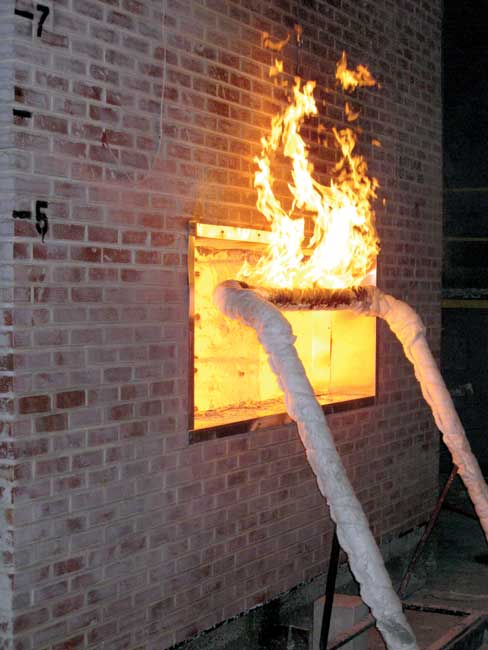Navigating Wall Assembly Fire Testing
Learning Objectives:
- Recognize the impact of NFPA 285 test requirements in the context of the International Building Code.
- Apply the NFPA 285 components and parameters for successful test performance.
- Identify combustible components in a noncombustible wall assembly that requires NFPA 285 testing.
- Design building envelope systems that are NFPA 285 compliant.
Credits:
From the popularity of building certification programs to net-zero energy building initiatives to the active building enclosure movement, expectations continue to increase for building performance, facility life, and occupant health and safety. Because two of the most critical aspects of high-performance buildings are air/water tightness and the enclosure's thermal performance, the necessity of using more insulation, and high-quality air/water barrier and flashing materials, will continue to increase as the industry trends toward highly energy-efficient building envelopes.
While market demand for insulations, dedicated air and water barriers, and other combustible envelope materials are at an all-time high, a little-known code-required fire test standard called National Fire Protection Association (NFPA) 285 has suddenly been cast into the spotlight. Truth be told, this Standard Fire Test Method for Evaluation of Fire Propagation Characteristics of Exterior Non-Load-Bearing Wall Assemblies Containing Combustible Components has been around for a couple of decades, but its relevance has significantly increased with additional combustible components included in more recent International Building Code (IBC) updates.
Consequently, it behooves architects to fully understand the history, relevance, and application of this important standard.
The History of NFPA 285
Dating back to the 1970 energy crisis, the plastics industry began encouraging the building industry to start using foam plastic insulation on exterior walls to increase energy efficiency. However, four of the five types of construction listed in the building codes had noncombustible requirements, so the proposal was outright rejected.
 |
Now subject to NFPA 285 testing per the International Building Code, foam plastic insulation, combustible exterior claddings, and water-resistive barriers must demonstrate limited fire propagation. Photo courtesy of DuPont Building Innovations |









